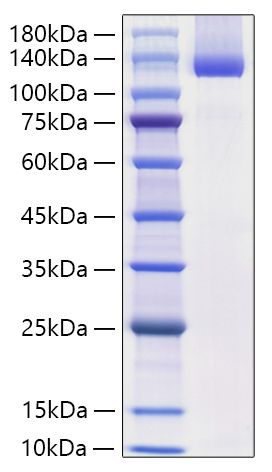Neuropilin-1 (Npn-1, previously neuropilin; also CD304 or BDCA4 in humans) is a 130_x001E_140 kDa type I transmembrane (TM) glycoprotein that regulates axon guidance and angiogenesis. The full-length 923 amino acid (aa) mouse Npn-1 contains a 623 aa extracellular domain (ECD) that shares 98% aa identity with rat and 93% aa identity with human, equine, bovine and canine Npn-1 . The ECD contains two N-terminal CUB domains (termed a1a2), two domains with homology to coagulation factors V and VIII (b1b2) and a MAM (meprin) domain (c). At least one splice variant that diverges at aa 587 and lacks the TM domain has been sequenced . This form is potentially a soluble antagonist, based on results from human Npn-1 splice variants . The sema domains of Class III secreted semaphorins such as Sema3A bind Npn-1 a1a2 . Heparin, the heparin-binding forms of VEGF (VEGF165, VEGF-B and VEGF-E), PlGF (PlGF2), and the C_x001E_terminus of Sema3 bind the b1b2 region . Npn-1 and Npn-2 share 48% aa identity within the ECD and can form homo- and hetero-oligomers via interaction of their MAM domains . Neuropilins show partially overlapping expression in neuronal and endothelial cells during development. Both Neuropilins act as co-receptors with plexins, mainly plexin A3 and A4, to bind class III semaphorins that mediate axon repulsion . However, only Npn-1 binds Sema3A, and only Npn-2 binds Sema3F . Both are co_x001E_receptors with VEGF R2 (also called KDR or Flk-1) for VEGF165 binding . Sema3A signaling can be blocked by VEGF165, which has higher affinity for Npn-1 . Npn-1 is preferentially expressed in developing or remodeling arteries . Npn-1 is also expressed on dendritic cells and mediates DC-induced T cell proliferation .







